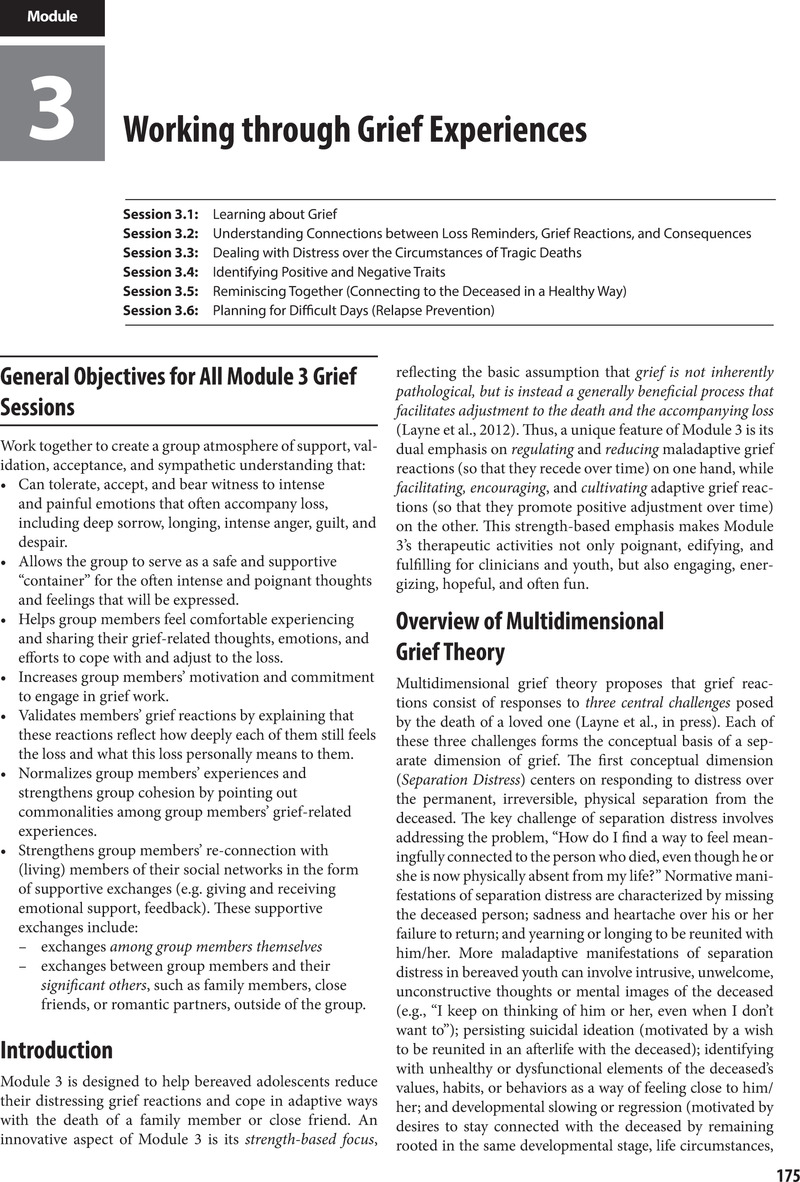 Trauma and Grief Component Therapy for Adolescents
Trauma and Grief Component Therapy for Adolescents Book contents
- Trauma and Grief Component Therapy for Adolescents
- Trauma and Grief Component Therapy for Adolescents
- Copyright page
- Contents
- Introduction
- TGCTA Pre-Treatment Assessment Interview
- Module 1 Foundational Knowledge and Skills
- Module 2 Working Through Traumatic or Loss Experiences
- Module 3 Working through Grief Experiences
- Module 4 Preparing for the Future
- Book part
- Index
- References
Module 3 - Working through Grief Experiences
Published online by Cambridge University Press: 07 December 2017
- Trauma and Grief Component Therapy for Adolescents
- Trauma and Grief Component Therapy for Adolescents
- Copyright page
- Contents
- Introduction
- TGCTA Pre-Treatment Assessment Interview
- Module 1 Foundational Knowledge and Skills
- Module 2 Working Through Traumatic or Loss Experiences
- Module 3 Working through Grief Experiences
- Module 4 Preparing for the Future
- Book part
- Index
- References
Summary

- Type
- Chapter
- Information
- Trauma and Grief Component Therapy for AdolescentsA Modular Approach to Treating Traumatized and Bereaved Youth, pp. 175 - 260Publisher: Cambridge University PressPrint publication year: 2017


